
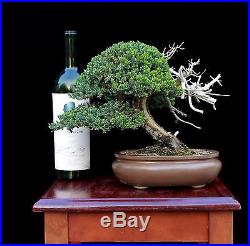
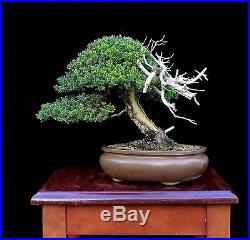
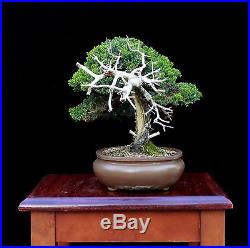
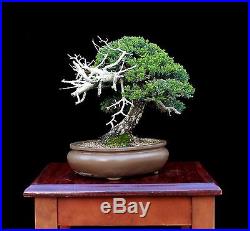
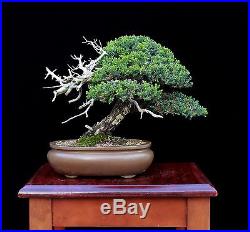
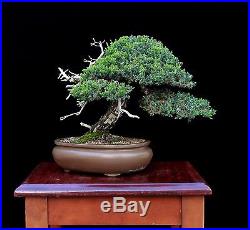
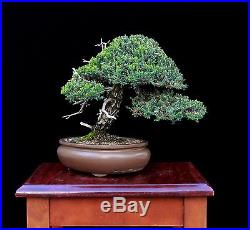
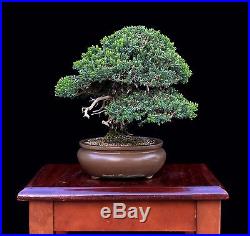
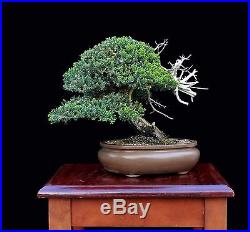
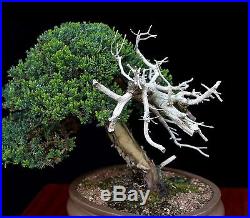
Height: The height of the tree from the soil line to the top of the apex is 8. Trunk Diameter: The trunk Dia, is approximately 1.5. Nebari (Root spread): The root spread is generous 2.5. Ceramic Pot: The light Brown unglazed ceramic container measure 6×5x2.5. This Japanese Juniper (Nana), which is trained in a slanting windswept style originates from Japan and was created by Bonsai Master Kenji Miyata. When designing a bonsai one of the things that Mr. Miyata always seems to accomplish is to tell a story with the tree that he is creating. A successful bonsai tree must be more than just a plant in a pot. The tree should always generate some kind of emotion for it to be a successful composition. In the case of creating this tree, Miyata-san stayed close to his strong yet traditional Japanese bonsai technique. Miyata-san has been quoted as saying that classic Japanese bonsai trees of the highest quality are triangular and have branches that flow fluidly. In order to create this tree everything that was not necessary was removed. Short history of Kenji Miyata. Bonsai Master Kenji Miyata is from. Toyohashi, a town in Aichi prefecture, Japan. Before being certified as a Bonsai Master by the Japan Bonsai Association, Mr. Miyata began his bonsai journey as a 15 year old bonsai apprentice at Daiju-en and Tokai-en bonsai nurseries. Daiju-en has produced some of Japan’s best bonsai growers including Japan’s grand bonsai master Toshinori Suzuki. After six years of gaining sufficient knowledge and developing his own skills, Miyata-san became a bonsai master at the young age of 21. In 1977 he started his own bonsai business, the Miyata-en Bonsai Garden, where he maintained and cared for numerous private collections of prestigious and highly valued trees that have been displayed at the. Kokufu-ten in Kyoto, Japan. Miyata-san has also won awards at three consecutive Sakufu-ten (professional) bonsai contests (1999, 2000 and 2001). The contest features the works of the best bonsai growers in Japan. Miyata’s style is sought out because he. Is known for creating masterpiece bonsai. Is also considered a classic Japanese bonsai traditionalist, using centuries-old techniques that emphasize symmetry and balance. This is your opportunity to own a Kenji Miyata bonsai, one of the world’s foremost authorities on bonsai creation and styling. Thank you and have a great day! On a side note. Ive noticed that not too many sellers talk or write about things that should be done after you receive your tree so I will give you my two cents worth. When you receive your tree unpack it carefully. Cut the tape and plastic wrap from the pot and the branches if applicable. Secondly give the tree a good watering and then put the tree in a partially shaded spot for a few days to allow it to adjust. After several days of adjustment your new bonsai can be reintroduced to bright sun. Good luck and if you have any questions feel free to fire off a message. The item “BONSAI TREE KENJI MIYATA JAPANESE JUNIPER (Nana) MASTERPIECE” is in sale since Tuesday, March 21, 2017. This item is in the category “Home & Garden\Yard, Garden & Outdoor Living\Plants, Seeds & Bulbs\Plants & Seedlings\Bonsai”. The seller is “bonsaihut” and is located in Mission Hills, California. This item can be shipped to United States.
- Country/Region of Manufacture: Japan
- Brand: Bonsai
- Model: Bonsai
- MPN: Bonsai
Tags: bonsai, japanese, juniper, kenji, masterpiece, miyata, nana, tree

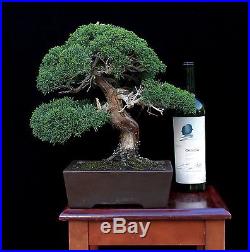
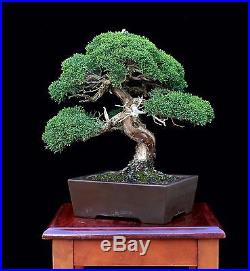
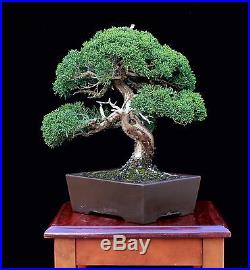
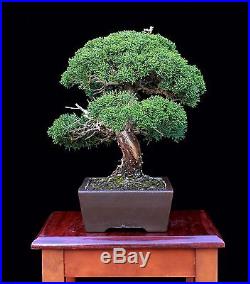
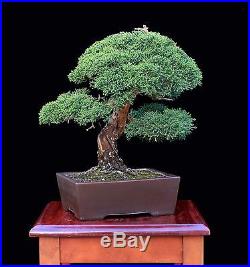
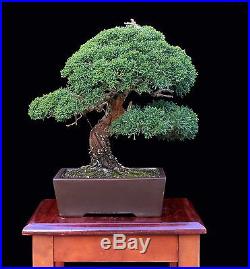
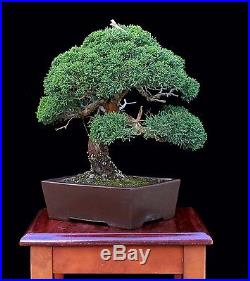
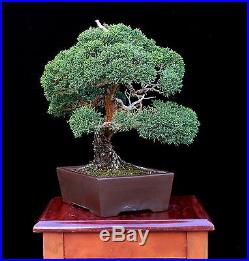
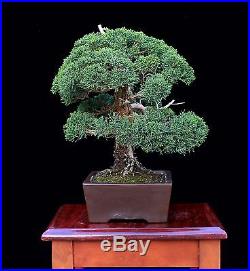
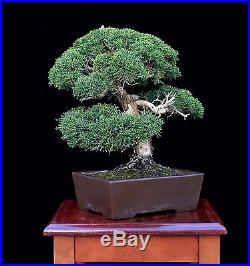
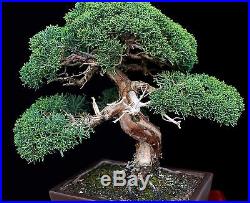
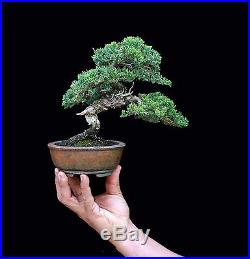

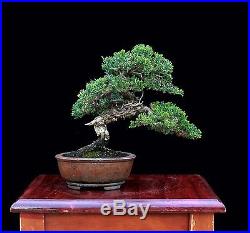
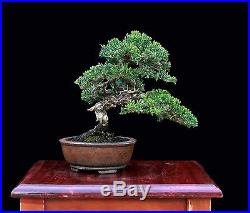
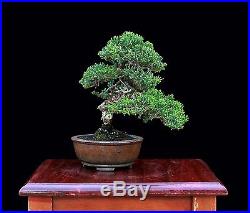
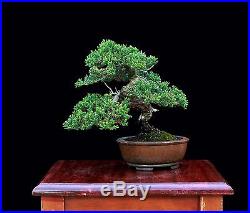
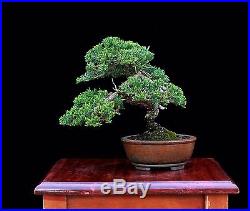
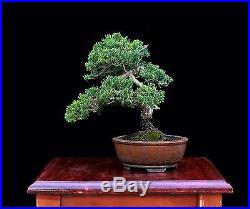
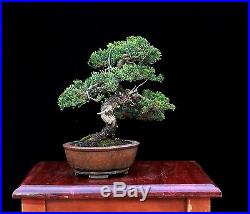
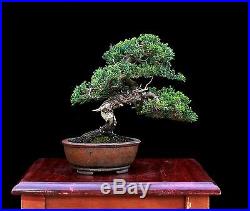
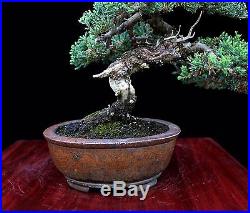
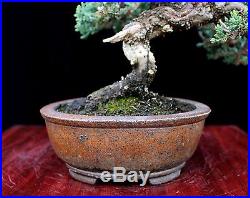
0